🌼 Attractive 16+ Flowers Starting With C With Pictures
The names of the flowers starting with C are both captivating and diverse, presenting a wonderful variety of colours, forms, and fragrances. I recall visiting a garden centre filled with rows of flowers all beginning with ‘C,’ and one appeared to outshine the other with its particular beauty.
Whether you’re looking to add a touch of elegance to your garden or simply want to explore the beauty that nature has to offer these C blooms are sure to impress. We have already discussed flowers starting with B.
Here are some flowers that start with C 🌼. As part of our alphabetical floral series, we are now exploring stunning blooms beginning with the letter C.
✅ Camellia
✅ Carnation
✅ Chrysanthemum
✅ Crocus
✅ Coreopsis
✅ Clematis
✅ Calla Lily
✅ Coneflower
Cape primrose
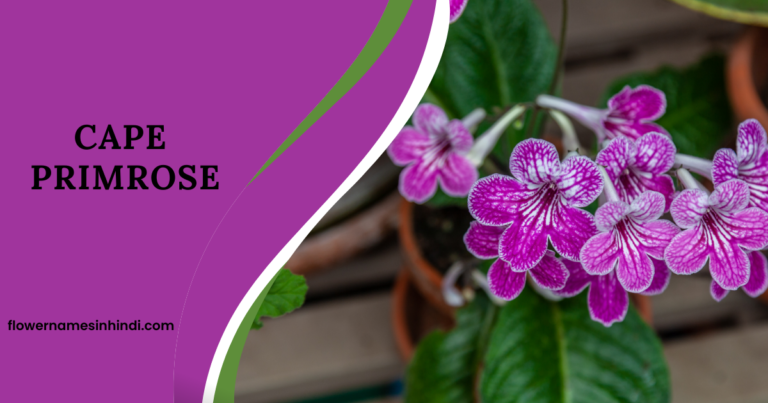
The name Cape Primrose indicates its cape region of South Africa. These flowers are known for their lush, velvety leaves and vibrant, trumpet-shaped flowers. It belongs to the Gesneriaceae family having other flowers as well, such as gloxinia and African violet.
These plants grow best in well-drained soil and indirect light, making them an excellent choice for indoor gardens. They prefer a humid environment and require regular watering, but it’s essential to avoid water logging to keep their roots healthy.
| Feature | Detail |
| Botanical name | Streptocarpus |
| No. of species | 184 species |
| Symbol | Delicacy, tranquility |
| Blooming time | Spring to Fall |
| Origin/ Location | South Africa |
Candytuft: Flowers Starting With C
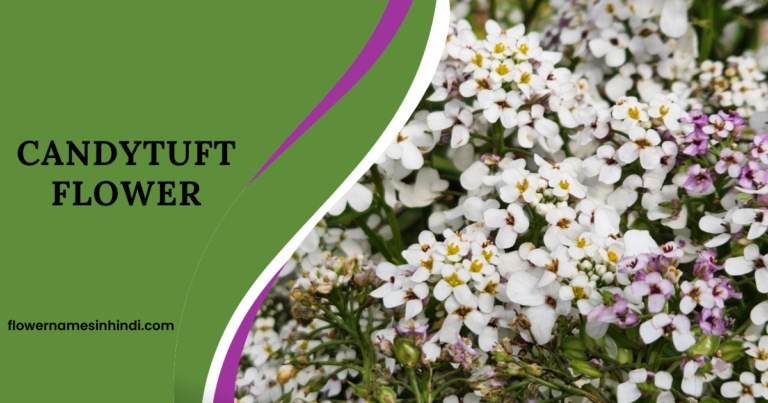
Candytuft (Iberis) is a genus of flowering plants that belongs to the Brassicaceae family. This family is commonly known as the cabbage or mustard family.
It is a charming, low-growing perennial plant, well-loved for its clusters of tiny, delicate flowers that create a stunning carpet of white in gardens. Due to its mat-forming habit, Candytuft is mostly used as a ground cover or in rock gardens, borders, and edging.
There is a variety of colors for this flower, like pink, lavender, and white, the most common. Candytuft is a perfect choice for those looking to add a touch of elegance with minimal maintenance, as it has the ability to tolerate drought.
| Feature | Detail |
| Botanical name | Iberis |
| No. of species | 30 species |
| Symbol | Innocence, beauty, Confidence |
| Blooming time | Early Spring to mid-summer |
| Origin/ Location | Europe, Mediterranean |
Calla Lily: The Epitome of Elegance

It is an herbaceous, perennial flowering plant belonging to the Araceae family, also called the Arum family. It also includes philodendrons, peace lilies, and anthuriums.
The Calla Lily is known for its exquisite trumpet-shaped flowers and sleek, arrow-shaped leaves, making it a symbol of purity, beauty, and refinement. Their distinctive structure enables them to be the main point of garden beds, containers, or water features.
The flowers come in a variety of colours, from traditional white to vivid yellows, rich purples, pinks, and even deep maroons.
Calla Lilies are loved in wedding bouquets and gardens because their beautiful shape and soft beauty make special moments even more meaningful.
| Feature | Detail |
| Botanical name | Zantedeschia |
| No. of species | 8 species |
| Symbol | Purity, elegance, rebirth |
| Blooming time | Late spring to early summer |
| Origin/ Location | Southern Africa |
Coneflower: Flowers Starting With C

Coneflower, known for its daisy-like blooms with prominent, cone-shaped centers, is a perennial plant. It belongs to the Asteraceae family, which also includes daisies, asters, and sunflowers.
They tolerate full sun and well-drained soil, and they are adaptable even in poor soil conditions. Their strong stems make them amazing for cut flowers and are frequently used in wildflower gardens, prairie plantings, or as a colorful accent to perennial borders.
Besides their visual appeal, coneflowers are also used for their therapeutic benefits; they are commonly employed in herbal treatments to enhance the immune system and combat infections.
| Feature | Detail |
| Botanical name | Echinacea |
| No. of species | About 10 species |
| Symbol | Strength, health, healing |
| Blooming time | Mid-Summer to Fall |
| Origin/ Location | North America |
Catnip: The Feline’s Favorite Herb
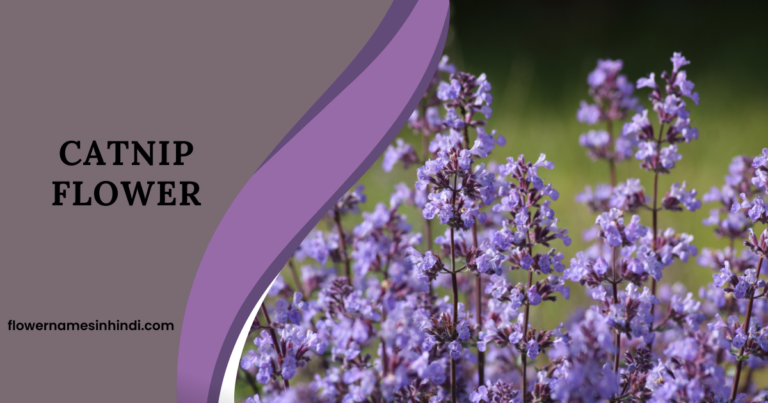
The flower name Catinip comes from the Latin word ‘nepeta,’ which means ”next” in English. Catnip is a perennial plant belonging to the Lamiaceae family or mint family. It is primarily recognized for its attractiveness to cats. That’s why it is also called catswort, catwort or catmint.
Some herbal teas (or tisanes) contain catnip, which is valued for its sedative and relaxing qualities. The plant’s smooth, gray-green leaves and minty perfume offer sensory depth to garden settings. It is a versatile plant that appeals to both humans and pets.
Studies have shown that nepetalactone can be 10 times more effective at repelling mosquitoes than DEET, the chemical commonly used in insect repellents.
| Feature | Detail |
| Botanical name | Nepeta cataria |
| No. of species | Over 250 species |
| Symbol | Happiness for cats, playfulness, health |
| Blooming time | Late Spring to Fall |
| Origin/ Location | Europe, Asia |
Cardinal Flower
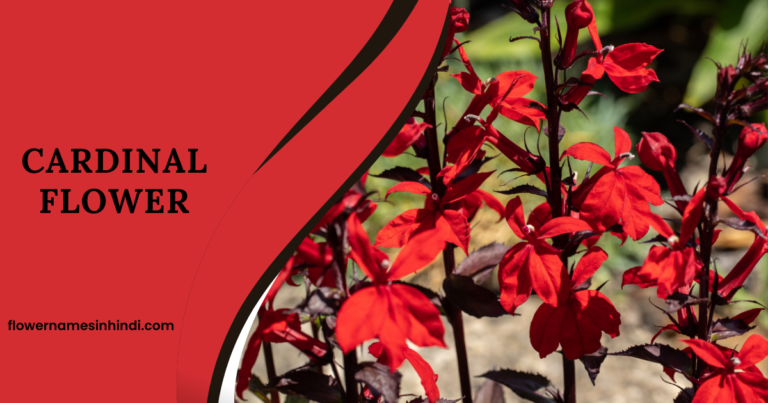
The Cardinal flower is a perennial herbaceous plant belonging to the Campanulaceae family which is also known as the bellflower family. It grows upto 4 ft (1.2m) tall and is found in wet places such as riverbanks or swamps.
The term ‘cardinal flower’ was most likely due to the resemblance of blooms colour to the vesture of Roman Catholic Cardinals. Its vibrant colour and tall, spiky structure make it ideal for providing vertical interest and dramatic bursts of brightness to water or shady gardens.
| Feature | Detail |
| Botanical name | Lobelia cardinalis |
| No. of species | About 400 species in the Lobelia genus |
| Symbol | Distinction, passion, love |
| Blooming time | Mid-Summer to Early Fall |
| Origin/ Location | United States, Canada, North America |
Campanula: Flowers Starting With C
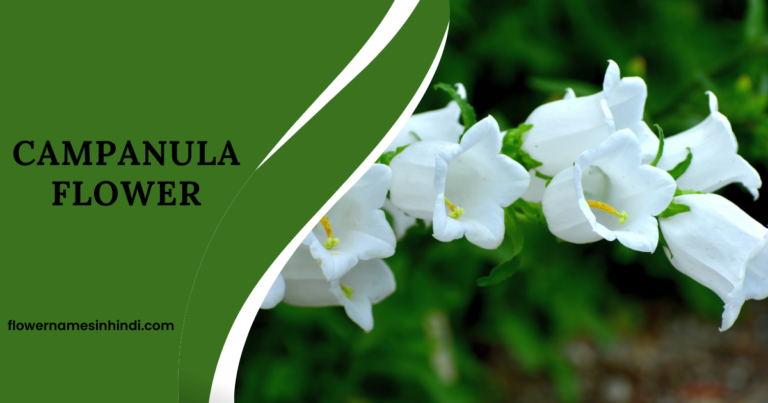
Campanula, also known as bellflower, belongs to the Campanulaceae family. The flower’s name comes from the Latin word “campana,” which means bell. Other plants in the same family include Lobelia, Platycodon, and Adenophora.
Their bell-shaped blooms are usually blue, purple, or white, which give a delicate pop of colour to borders, rock gardens, and containers.
Although they can grow in different seasons and conditions, they prefer full sun to partial shade to bloom. Due to this distinctive feature, they are easy to grow and require low maintenance.
| Feature | Detail |
| Botanical name | Campanula |
| No. of species | Over 500 |
| Symbol | Gratitude, Affection |
| Blooming time | Late Spring to Late Summer |
| Origin/ Location | Europe, Asia, and North America |
Catchfly: The Sticky Beauty
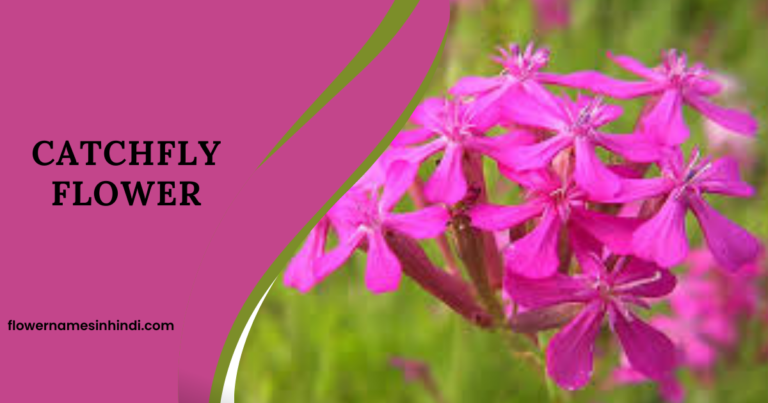
Catchfly (Silene) is the largest genus of the Caryophyllaceae family, also called the pink family. Silene is the feminine version of Silenus, an Ancient Greek wood deity who accompanied and tutored the wine god Dionysus.
This plant is a lovely and eye-catching bloom that provides brilliant colour to gardens. You can identify this plant by its sticky stems and leaves that may snare tiny insects. This genus comprises both annual and perennial plants with vivid, star-shaped flowers in pink, red, and white.
In an incredible scientific achievement, Russian scientists successfully regenerated a Silene plant from 32,000-year-old seeds found frozen in Siberian permafrost, making it the oldest plant ever brought back to life!
| Feature | Detail |
| Botanical name | Silene |
| No. of species | 900 species |
| Symbol | Endurance, lasting beauty |
| Blooming time | Late Spring to Early Summer |
| Origin/ Location | Europe, Asia, Africa, and North America |
Coreopsis: Flowers Starting With C
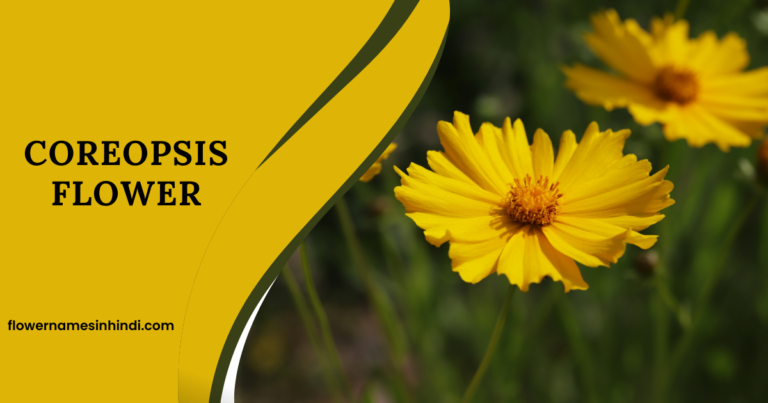
Coreopsis, commonly known as Tickseed or Calliopsis, belongs to the Asteraceae family. These plants grow upto 18-47 inches (46–120 centimetres) in height. The blooms are normally yellow with a curved tip, although they can also be yellow and red bicolor.
They are known for their resilience and long blooming period. Coreopsis plants are popular for their easy-care nature and vibrant colors, which range from sunny yellows to rich reds and oranges.
| Feature | Detail |
| Botanical name | Coreopsis |
| No. of species | 75-80 species |
| Symbol | Cheerfulness, love at first sight, Optimism |
| Blooming time | Early summer to fall |
| Origin/ Location | North and South America |
Calathea Musaica
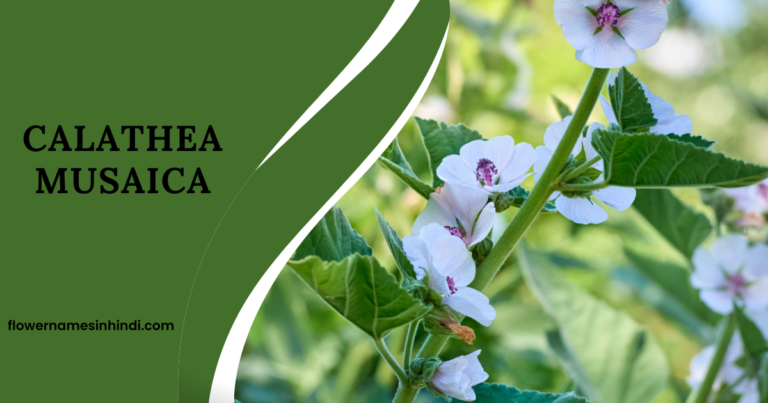
Calathea musaica, once named due to its mosaic-like leaves, has now changed to a new name Goeppertia kegeljanii. It belongs to the Marantaceae family and can fold its leaves at night, a phenomenon referred to as prayer plant movement.
The plant’s leaves are light green with deeper green veining, giving it a distinctive, almost pixelated look. This feature makes it popular among plant devotees and interior decorators.
However, it demands special care, such as regular wetness, high humidity, and shelter from direct sunshine, which may burn its delicate leaves.
| Feature | Detail |
| Botanical name | Goeppertia kegeljanii |
| No. of species | Around 60 species |
| Symbol | Elegance, sophistication, harmony |
| Blooming time | Rarely flowers indoors |
| Origin/ Location | Brazil |
Cock’s comb: Flowers Starting With C
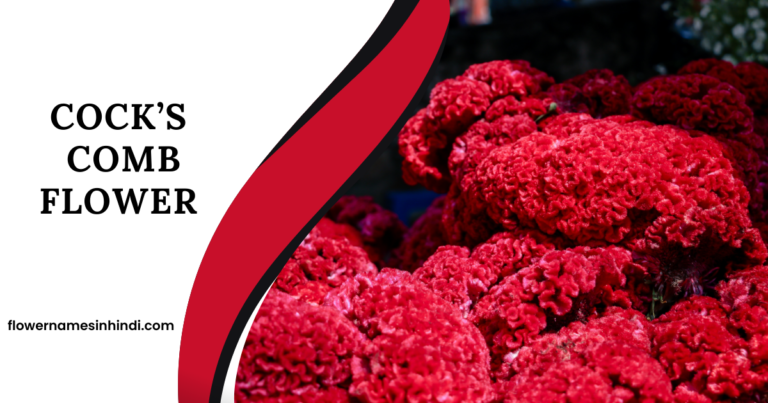
Cock’s Comb, also known as plumed or silver cockscomb, belongs to the Amaranthaceae family, also called the Amaranth family.
It is a distinctive flower that stands out in any garden or floral arrangement due to its velvety and crested blooms, which resemble a rooster’s comb. This plant is valued for its rich colors, ranging from deep reds and pinks to vibrant oranges and yellows.
They prefer warm temperatures with consistent moisture and are easy to grow, making them suitable for garden beds and containers. The leaves and flowers of this plant are edible. It naturally provides hyaluronic acid and also serves as an ingredient in soaps.
In folk medicine, various parts of the Celosia plant have been used to treat conditions like intestinal worms, mouth sores, and eye infections.
| Feature | Detail |
| Botanical name | Celosia argentea var. cristata |
| No. of species | Part of the Celosia genus with about 60 species |
| Symbol | Boldness, affection |
| Blooming time | Mid-spring to summer |
| Origin/ Location | Africa, Asia |
Clematis: The Queen of Climbers

Clematis is a popular climbing plant that produces star-shaped blooms of colours, including purple, pink, white, and blue. It belongs to the Ranunculaceae family, also known as the family of delphiniums, anemones, and buttercups.
The leaves are opposing, separated into leaflets and leafstalks that twist and coil around supporting objects to hold the plant as it rises. The species of clematis flowers are found all over the world, depending on the season, conditions, and climate.
| Feature | Detail |
| Botanical name | Clematis |
| No. of species | 380 species |
| Symbol | Ingenuity, mental beauty, Creativity |
| Blooming time | Early and mid-summer |
| Origin/ Location | Europe, Asia, North America, and Australia |
Chrysanthemum: The Autumn Jewel
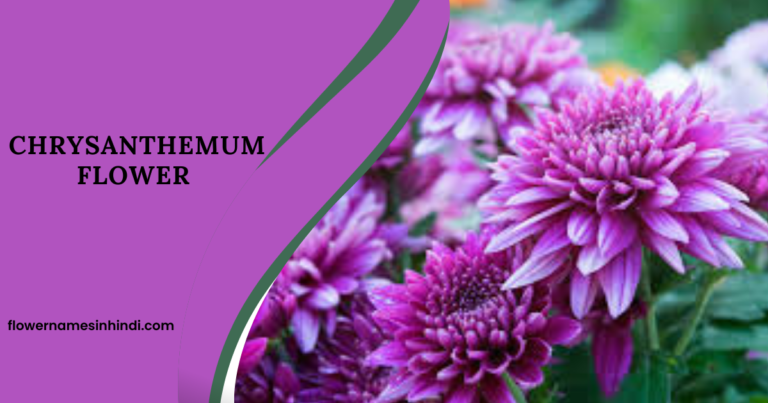
Chrysanthemums, an iconic symbol of fall, also called “mums,” are flowering plants belonging to the Asteraceae family. Also known as the aster, sunflower, or daisy family, this group includes chrysanths. They are valued for their brilliant colors and diverse shapes and are widely cultivated worldwide.
They require full sunlight and well-drained soil to grow and are used in ground covers, pots or in floral arrangements. Generally, they grow upto 6 inches tall but can reach 2 ft height when flowering.
Beyond their beauty, these flowers help purify indoor air and play vibrant roles in festivals like Japan’s Keko Matsuri, as well as in traditional medicine and artistic creations
| Feature | Detail |
| Botanical name | Chrysanthemum |
| No. of species | Around 40 |
| Symbol | Longevity, joy, rejuvenation |
| Blooming time | Late Summer to Fall |
| Origin/ Location | Asia (China, Japan), Europe |
California Poppy: Flowers Starting With C

The California Poppy is a flowering plant belonging to the Papaveraceae family. It is the native and official state flower of California but is also present in other parts of the western United States and northern Mexico.
The flower is famous for its brilliant and iconic orange petals. The flowers often bloom on bright days and then close at night or during overcast weather, resulting in a dynamic and ever-changing scene.
It is an annual plant growing upto 13-30 cm (5-12 inches) tall with alternately branching glaucous blue-green leaves.
| Feature | Detail |
| Botanical name | Eschscholzia californica |
| No. of species | About 12 species within the genus |
| Symbol | Sleep, peace, consolation |
| Blooming time | Spring to Early Summer |
| Origin/ Location | California |
Cyclamen: The Winter Gem
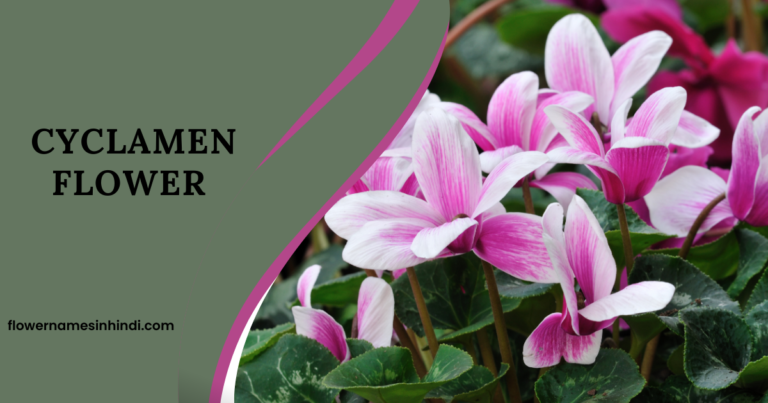
Cyclamen are known by the common names swine bread or snowbread, classified in the Primulaceae family. The name derived from the Ancient Greek word “kyklaminos”, which means round tuber. This flower has heart-shaped leaves, making it charming and elegant of all flowering plants.
Its petals are vibrant and upswept, and they resemble butterfly wings. These flowers bloom in shades of pink, red, white, and purple. Cyclamen’s foliage is as attractive as its flowers, often marked with silvery patterns that add to its ornamental value.
Despite their delicate appearance, Cyclamen plants are relatively easy to care for, requiring minimal watering and protection from extreme cold. The flower also contains toxins such as saponins and alkaloids.
| Feature | Detail |
| Botanical name | Cyclamen |
| No. of species | 23 species |
| Symbol | Affection, sincerity, lasting bonds |
| Blooming time | Fall to Early Spring |
| Origin/ Location | Mediterranean, Europe, Western Asia |
Columbine: Flowers Starting With C
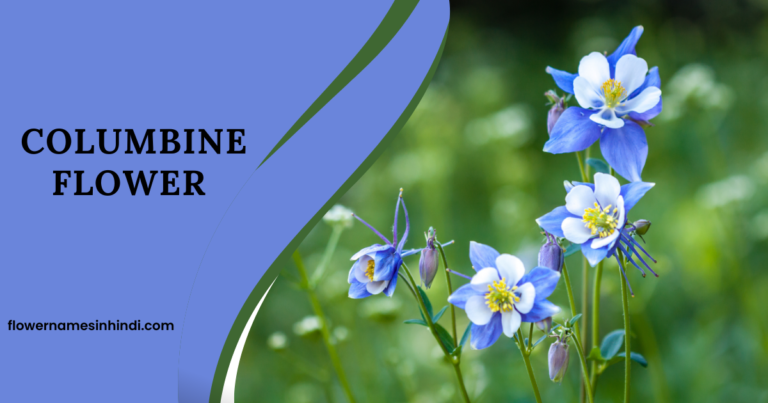
The columbine name is derived from the Latin word “Columba,” meaning “dove,” due to the resemblance of the flower’s petals to a flock of doves. It belongs to the Ranunculaceae family, which is also called the buttercup family.
These blooms are often found in a variety of colors, including shades of blue, pink, red, white, and yellow. There are many bi-color varieties that enhance their visual appeal.
In folklore, it is often associated with love and faithfulness, making it a popular choice for romantic garden themes.
| Feature | Detail |
| Botanical name | Aquilegia |
| No. of species | 130 species |
| Symbol | Courage, wisdom, faithfulness |
| Blooming time | Spring to Early Summer |
| Origin/ Location | Eastern Europe, Central Asia |
Conclusion of Flowers Starting With C
We have discussed the captivating beauty and diversity of different types of flowers, beginning with C. These flowers come in a diverse range of shapes and floral arrangements.
You can choose the delicate petals of the Carnation or the exotic charm of the Cattleya Orchid to add a unique touch to gardens and bouquets. You can also read more blogs like Flowers starting with E and don’t forget to visit our homepage to explore more interesting flowers.
Related Articles:







